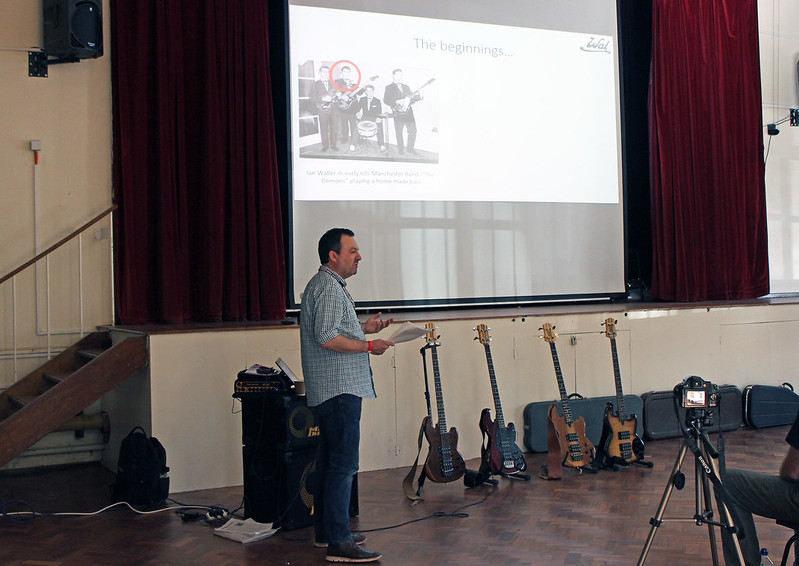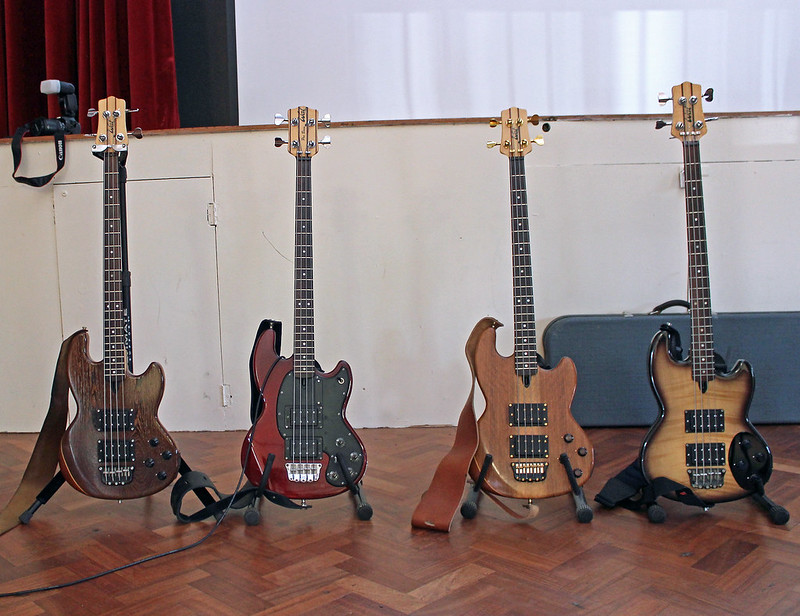The Wonderful World of the Woods of Wal –
Part 2, Bodies
In this second feature looking at the
woods employed by Wal in building their basses we are going to take a closer
look at the woods used for the bass bodies.
Initially, all Wal bodies were
constructed from solid ash. Although not as common a tone wood as, say alder or
basswood (pronounced BASS - as in the
fish or the beer!) it is well known for its tonal properties. It's featured on
many classic Fender models and a host of other designs. The wood is considered
to give a relatively bright, snappy tone with good sustain.
However, with the introduction of the
Custom Series basses everything changed and Wal stepped up into the ranks of
what would later be known as "boutique basses". The Custom Series
retained the same laminate neck construction (although with a streamlined
headstock shape) but the construction of the body was very different. This time
a sandwich of different (often exotic) hard woods was employed. At the core was
a thick slab of mahogany. Initially this was exclusively Brazilian mahogany but
over time as the wood became scarcer, more expensive and subject to
increasingly strict export restrictions under CITES (The Convention on Trade in
Endangered Species) other sources and subspecies were employed. Notwithstanding
the emotional and almost mystical cachet that Brazilian mahogany and rosewood
has with builders and players alike this didn't imply any reduction in the
quality (aesthetic or sonic) of the woods used.
































